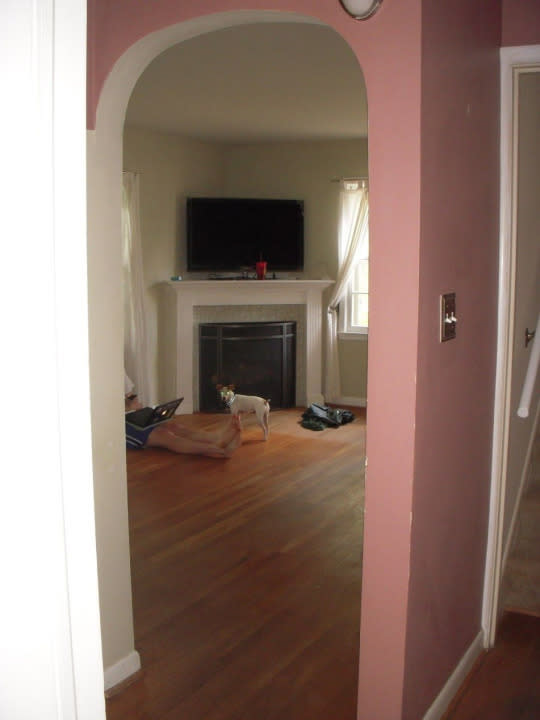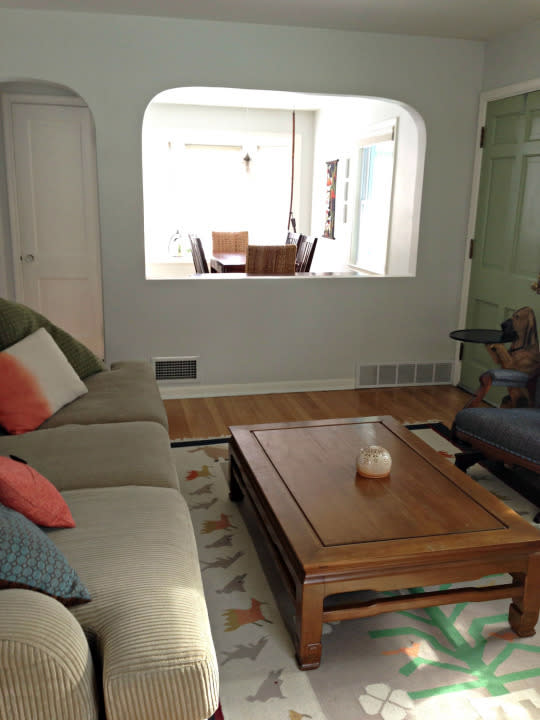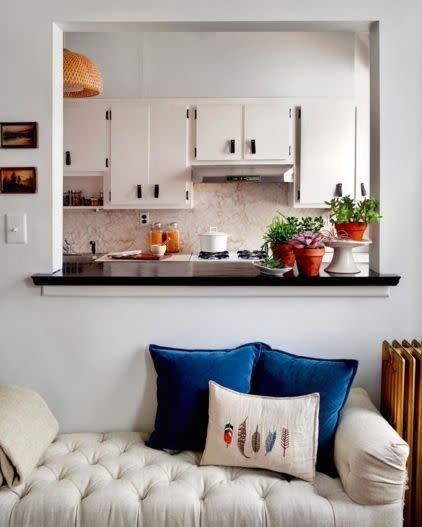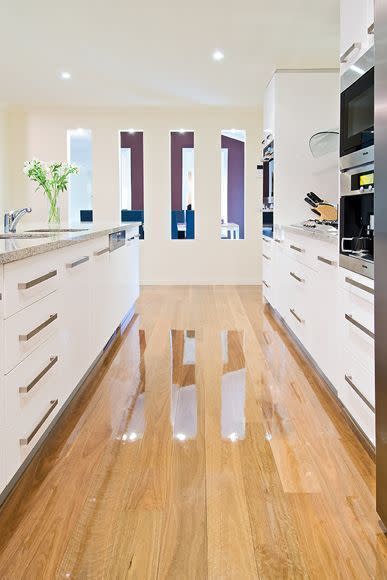How to Open Up a Room Without Tearing Down a Wall
Answer: Only take down part of a wall.
Wait, don’t go! I know that sounds like a cop-out, clickbait-y type of answer, but it can be a good, viable option for letting light in a room. Stay with me.
Related: 5 Design Ideas From the New Ace Hotel You Could Actually Do at Home
I knew that our 1947 house was to be our home when I first walked in the door, despite the fact that not a single part of it resembled an open floor plan: The rooms are completely compartmentalized.


Before: Our completely separated living room and dining rooms (and vivid paint selections from the prior owners). (Photos: Lindsay-Jean Hard/Food52)
Related: The Readymade DIY Vase You’ve Been Throwing Away
Our living room is on the front west side of our home, and the front window is blocked by a large tree that keeps it cool in the summer but also quite dark. Our dining room is directly adjacent, on the front east side of the house. It has a bay window and is delightfully bright and sunny, but that sunshine was largely going unappreciated—one only spends so much of a day eating.
Related: The Most Exciting Light Bulbs of 2016 Are Really Good-Looking—and Smart, Too!
We thought about taking out the wall between the two rooms, but that’s an expensive option: at least a couple thousand dollars, up to ten thousand or more if it’s a load-bearing wall. Ours isn’t a load-bearing wall, but there were other considerations that would’ve upped the price. One, we have original hardwood floors in both rooms: They would have had to be patched—really, really well to not end up with a striped effect in between the two rooms. And two, there’s an HVAC supply vent and a return vent within the wall—both of which would have had to be moved. Those two factors meant removing the entire wall would cost more than we were interested in spending, so we decided to make a large cutout in the wall instead.
My husband and a friend did the demo and finishing work themselves, so we invested sweat equity rather than dollars. But, even if you need to hire someone to do the work for you, the cost will almost certainly be far less than the cost of removing the entire wall, and you'll still get the benefits of a space that feels more open (and much brighter in our case).
Related: How to Start a Fireplace Fire and Keep It Going Strong


After: These rooms are so bright, I’ve got to wear shades. (Photos: Lindsay-Jean Hard/Food52)
If you’re creating a space between a kitchen and another room, you can add (or extend) a counter to give you a larger work surface in the kitchen and possibly create an additional space for seating on the other side.
Related: Speed Decluttering: How to Clean Out in a Heartbeat


(Photos: Bruce Buck (via New York Times), Chris Barrett Design)
Keep in mind that you don’t necessarily have to create a large opening either. You can create smaller openings to get some of the benefits, while still maintaining more of a distinction between the rooms.
Related: How to Bring Happy Hour Home


(Photos: Pinterest, David Lauer (via Houzz))
By Lindsay-Jean Hard.
